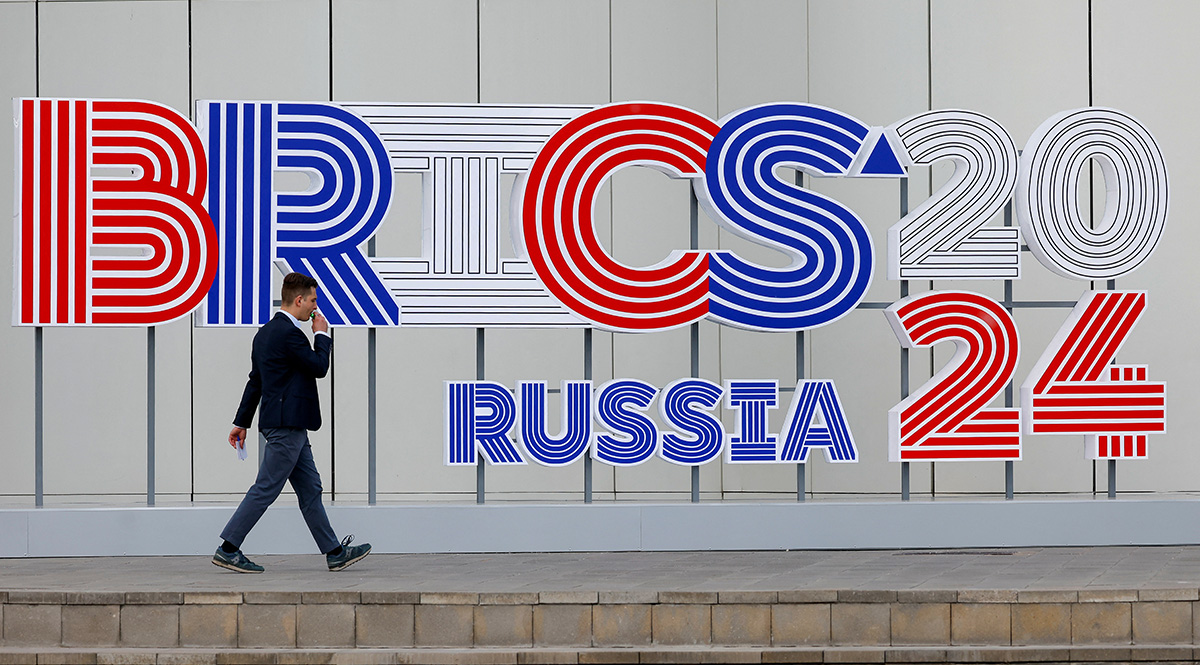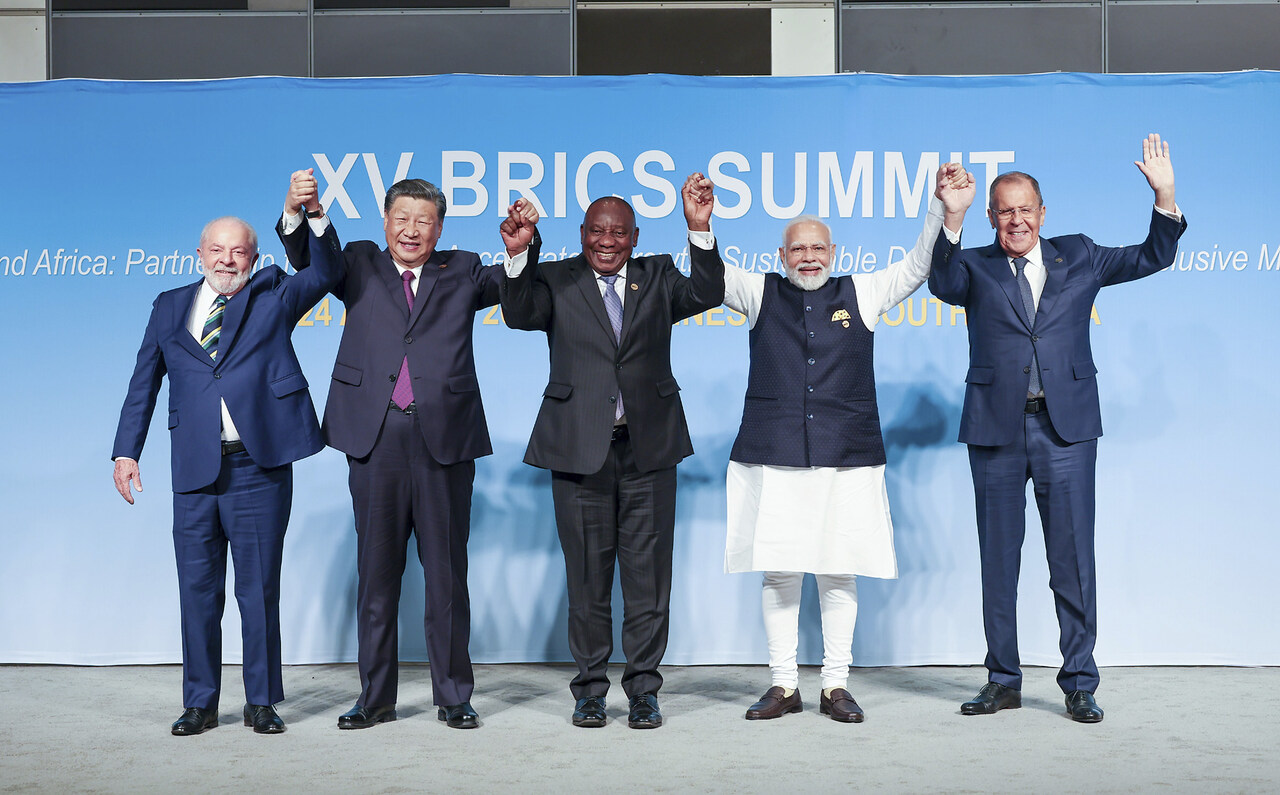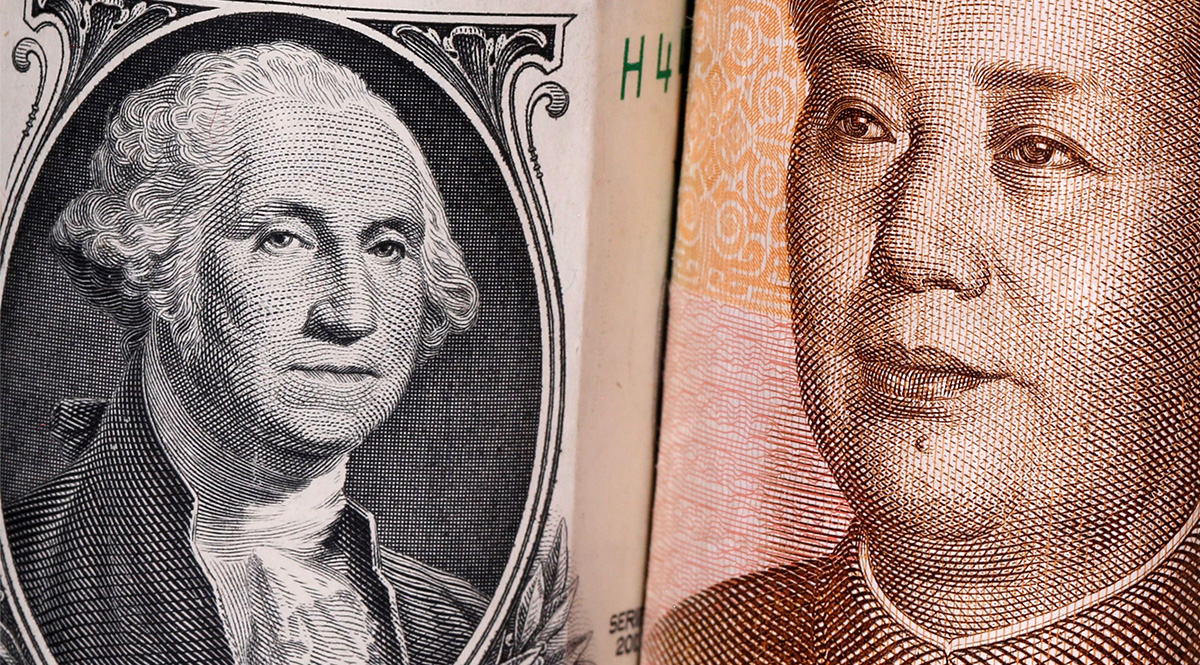BRICS+ Grows but Economic Cooperation Remains Limited
Despite their shared stance confronting Western dominance of global politics, the BRICS+ countries do not have the potential to become an economically cohesive bloc. This is a result of their differences of interests, which lessens the chances of achieving ambitious political goals. Also, the group comprises countries at different levels of development, varying links to the West, and dissimilar economic structures. A further increase in trade relations between them is possible, but it will be driven by political, rather than economic reasons. In particular, the asymmetry between the economy of China and that of the other members of the group will remain a challenge.
 Maxim Shemetov / Reuters / Forum
Maxim Shemetov / Reuters / Forum
BRICS+ and Its Potential
Since the beginning of 2024, four new countries—Egypt, Ethiopia, Iran, and the United Arab Emirates (UAE)—have joined the BRICS group. This came as a result of a political decision taken at the 15th BRICS Summit in August 2023, when Saudi Arabia, which has not yet made a decision on membership, and Argentina, which opted out of the group, were also invited to join the format. Following this expansion, the group began to be referred to as “BRICS+”.
According to the World Bank, the combined size of the economies of the nine BRICS+ members in 2022 was about $27.5 trillion, or around 27% of global GDP. Together, the countries of the bloc have 45% of the world’s population and their economic growth has far exceeded the global average over the past 30 years. The BRICS+ potential is strengthened by the presence of energy producers (oil and gas) and the diversified, manufacturing-based economy of China. With its combined potential, BRICS+ could rival the dominant economic powers as an economy larger than the U.S. or the EU individually, and accounting for more than 50% of the G7 as a single economy (even when including the EU as a whole in the calculation).
However, the group’s low economic cohesion remains a problem, due to, among other things, the dominance of China, whose economy accounts for around two-thirds of the GDP of the entire BRICS+. Trade relations are therefore developing not between all members of the group, but mainly between individual countries and China, despite the stated ambition to increase horizontal exchange between individual BRICS+ (and previously BRICS) countries. The latest enlargement has exacerbated this problem: the nine BRICS+ countries are located on four continents with virtually no common borders, and the economies of most of them are small on a global scale, which will further hamper the development of trade between pairs of members that do not include China.
Economic Heterogeneity
Coordination among BRICS+ members is also hampered by a divergence of interests, resulting from the different levels of the development of their economies. The group includes China, a leader in certain modern sectors (e.g., artificial intelligence, electric vehicles), Russia, whose economy, despite turbulence today, remains one of the 12 largest in the world, and the fast-growing India, the fifth-largest economy. On the other hand, BRICS+ includes countries with low levels of economic development, such as Ethiopia, or in long-term economic stagnation, such as South Africa. The per capita GDP levels of the group’s members (according to World Bank data for 2022) also differ fundamentally: from around $1,000 in Ethiopia to over $50,000 in the UAE. The gap in this respect between the bloc’s two largest countries, China (almost $13,000) and India (less than $2,500), is also large. The level of development defines the countries’ interests in economic relations, for example, with regard to capital flows, trade barriers, or the protection of intellectual property rights. It will therefore be difficult for the BRICS+ countries to reach an ambitious position on reforming the rules in these spheres, currently governed by the WTO, or to create an alternative system.
The divergence of interests of the BRICS+ members also stems from the dependence of some of their economies on energy commodity exports and the presence of energy importers in the group. For the former, it is essential that oil and gas prices remain high, while for the latter it is beneficial that they fall. The presence in the group of both energy exporters and importers raises certain opportunities for the development of trade relations in the area of energy; however, this would require trading below world market prices (i.e., exporters subsidising importers) or politically-motivated rising dependencies on BRICS+ producer partners and consciously reducing diversification of supply sources by the importers. The unlikeliness of such developments can be seen in, for example, China’s position on the construction of the Power of Siberia 2 pipeline. It is stalled because of Chinese demands that Russia reduce the price of gas to below market level, not much higher than domestic prices, as well as China’s willingness to accept only part of the commodity.
External Economic Relations of Group Members
BRICS+ members’ relations with Western countries and their allies differ significantly. Iran and Russia are subject to sanctions that weaken their economies but reduce dependence on the West. China, due to its low domestic consumption, depends on access to the U.S. and EU markets. BRICS+ also includes countries receiving assistance from the West, including Egypt and Ethiopia, some of the largest recipients of U.S. assistance in the world. All countries in the group are dependent on access to Western technology. Although China could partly take over the role of a provider of modern solutions, it too depends on Western partners, for example, in the field of advanced microchips and the machines to produce them.
The group members’ approaches to currency issues is heterogeneous as well. The UAE dirham is pegged to the dollar, China manipulates the exchange rate of its currency, and Brazil has a floating exchange-rate regime. Due to sanctions, the use of the U.S. dollar by some group members is restricted. Some are moving towards greater use of their own currencies in mutual settlements, but, as seen in the case of attempts to increase the role of the renminbi (yuan) in settlements between China and Russia, this is due to political rather than economic issues. The fact that changes in dominant currencies are not economically optimal is indicated by the negligible role of the renminbi in Russia’s exports and small role in its imports in 2022. The BRICS+ countries do not have a common policy towards settlement currencies, and plans for a common BRICS+ currency are unrealistic.
Conclusions
BRICS+ is not economically cohesive—it does not operate as an integrated group and bilateral relationships, especially involving individual format members and China, are more important. It will not become an integrated trading bloc, as the intensity of the relationship is primarily driven by the sizes of their economies and geographical distance. The members of the group share some common interests (e.g., regarding the impact of interest rates in developed countries on the rest of the world), on which they will be able to coordinate their actions. However, there are major differences between them, because of which BRICS+ will remain a political format, based on shared disapproval of the world order dominated, in the view of the format’s participants, by Western states. Attempts to deepen economic ties are possible, but the group will not become cohesive like the G7 in the foreseeable future. The development of economic relations will stem from political decisions, not market processes. The lack of historical ties, a community of values, and common economic interests means that the West can and should assume that BRICS+ members will behave opportunistically, with their loyalty to the group driven by their own current interests, while strengthening the BRICS+ as a whole will not be a priority.
From the point of view of Poland and the EU, it will be favourable if the divergence between the BRICS+ members increases. The presence of Russia, and its main supporter, China, in this format should be considered a potential threat to Poland and the Union’s interests, including in the security field, so offering its members a favourable alternative in the form of partnership between them and the West is vital. This will be possible especially with regard to countries that already have better relations with the West or are to some extent economically dependent on it. It is therefore advisable to present them with an offer of cooperation more favourable than what autocratic Russia or China can give. The recent expansion of the format shows that the EU should pay more attention to developing countries and establish beneficial relations with them before it is replaced by competing or hostile states, especially in the context of plans for further BRICS+ expansion. In the near future, it is also advisable to keep a close eye on its Kazan Summit (22-24 October this year), especially in the context of the development of its structures, which would confirm the group’s growing ambitions.




.jpg)
